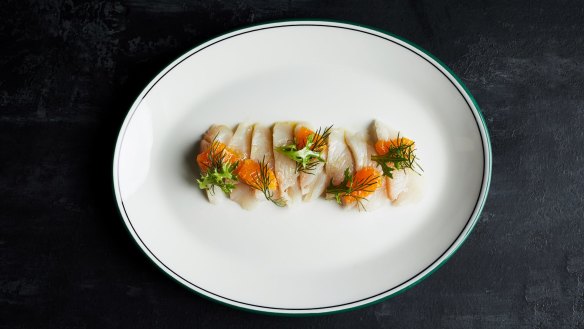A tide of change is transforming our relationship with seafood

It's 2027, and we're no longer gorging ourselves on prawns. Or tuna. Or salmon. Not because they have disappeared or we are appalled by how they are produced, but because we are eating so many other delicious fish – kingfish, cobia, lionfish, mackerel, and others we have yet to meet.
Our old favourites are still around. We have stopped loving them to death and figured out how to grow low-impact, high-quality seafood. We also know exactly what fish we are eating and where it comes from – sometimes we even know the fishers by name – so we can make confident choices based on nutrition and sustainability. Unsustainable seafood just doesn't sell: shoppers walk away from it the way they do transfat-laden foods today.
This scenario might sound ridiculous given the historically slow rate of change in the seafood industry, with its complex and often low-tech global supply chain. People assume that change will continue to plod along. I don't believe that.
The pace has already picked up dramatically. Governments, big industry players, entrepreneurs and investors are focused on seafood sustainability like never before. Several drivers are kicking in at once.
We are realising that we are going to run out of food if we don't find alternative supplies and environmentally sound production methods. Seafood is a healthy, high-quality protein source. It tastes good and we can grow it sustainably.
People are more interested in where their seafood comes from and what is in it. And they increasingly see quality and sustainability as linked.
Emerging technologies that will clear up seafood's murky supply chain and allow aquaculture to flourish are being developed by multiple players, big and small, right here in Australia and worldwide.
Investors are realising that the seafood market is huge, and they are seeking opportunities to make change in it. Feed for farm-raised fish alone is a multibillion-dollar opportunity.
Australia is primed to take a huge a huge bite of this opportunity. With universities full of exciting seafood technology advances, a comparatively pristine ocean environment, premium wild and aquaculture species and trusted quality, Australia's assets line up perfectly with what global consumer markets want right now.
The missing piece is connections for Australian seafood entrepreneurs to find investors and partners that can help them grow. That's why Fish 2.0 has added an Australia track to the global 2018–19 Fish 2.0 competition for sustainable seafood businesses, kicking off in Melbourne on October 23 and 24. When investors, entrepreneurs and industry leaders connect to support supply chain, technology and market innovations, Australia is going to be a seafood powerhouse.
--------
Monica Jain is founder and executive director of Fish 2.0, a global network and competition that brings investors and entrepreneurs together to drive the global sustainable seafood sector.
Restaurant reviews, news and the hottest openings served to your inbox.
Sign up